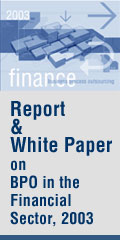|
|
Asset quality of Chinese banks under pressure as credit cycle turns, says Fitch report
January 14, 2009: Fitch Ratings has commented in a special report, "Chinese Banks: Asset Quality Under Pressure As Credit Cycle Turns" that the asset quality of Chinese banks will inevitably come under pressure from the considerably worsened economic environment and rising stress among borrowers. However, the agency has cautioned that this deterioration could take significantly longer than expected to manifest itself in loan quality data, due to features regarding the way loans are extended and classified in China that could significantly lengthen the time before asset quality problems appear in data.
In the special report, Fitch notes that credit risk continues to represent the single largest threat to the safety and soundness of banks in China, and discusses the extent to which banks' exposure to future credit losses may be underestimated. The report centres on three key areas: weaknesses in loan classification and expected loss models, the rise in hidden credit risk, and uncertainties about the reliability of collateral and guarantees underlying secured loans.
"In concert, these factors may be contributing to widespread under-capturing of Chinese banks' credit risk exposure, in turn placing a larger portion of capital at risk than may initially appear on the surface," says Charlene Chu, Senior Director in Fitch's Financial Institutions team.
The agency highlighted that the financial strength of China's largest banks has improved noticeably in recent years, in tandem with falling NPL ratios, rising loan loss provisioning, and substantial capital raising. Though current levels of loan loss reserves and capital - although healthier than at any point during the reform era - may overstate the degree of future asset-quality deterioration, Chinese banks are able to withstand this climate. "As we look into 2009 and 2010, it is clear that Chinese banks' exposure to credit losses is rising, but exactly when and how this will manifest itself clearly in financial data is less certain," adds Ms. Chu.
To the extent that the Chinese government's recent prodding of banks to loosen credit has been successful - loan growth was up sharply in November 2008 - the agency notes that NPL ratios could hold steady or even decline in the short-term, should growth of the denominator outstrip the rise in nominal NPLs in the numerator.
"For these reasons, it will be increasingly important in the coming months to look beyond headline ratios to other hard and soft indicators of asset quality, to obtain a clearer picture of the credit situation confronting Chinese banks. Transparency and disclosure will be key in this regard, as the accuracy of Chinese banks' reporting undergoes its first real test since commercialisation," comments Ms. Chu.
Uncertainty about the adequacy of existing capital and reserves to cover what remains a fairly unseasoned loan portfolio, and Chinese banks' lack of experience operating through a full economic cycle since being commercialised, are among the chief reasons the agency's Individual ratings for the 16 Chinese commercial banks under coverage remain at the lower end of the scale, despite substantial reforms.
(This is press release of Fitch Ratings)
CLICK FOR SPECIAL SECTION ON GLOBAL FINANCIAL CRISIS
Negative outlook for UAE banking sector, says Moody's
Outlooks on most banking systems in Asia Pacific turns negative
Negative credit outlook for Pakistani banking system
Greater refinancing risk for Asia-Pacific borrowers
Government measures should stabilize global banking markets
Global banking industry to see more restructuring & consolidation
Indian Banking sector challenged by domestic, not global, factors
Subprime Crisis: A Special
CLICK FOR MORE FEATURES & STORIES

|
|


|



